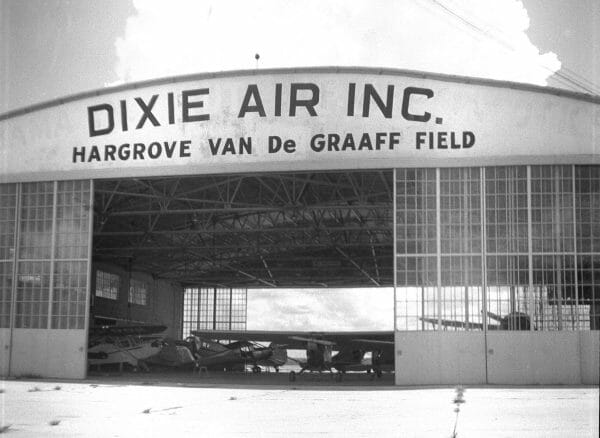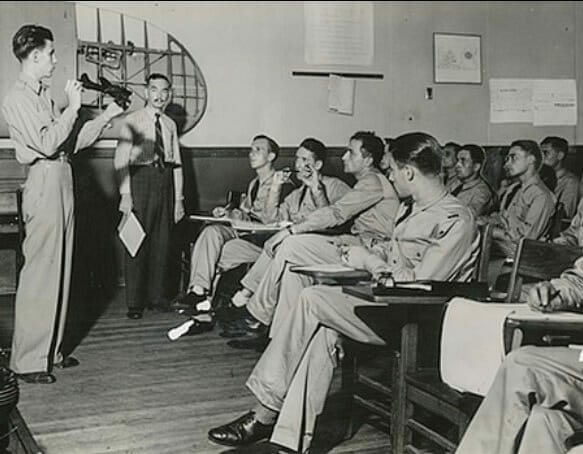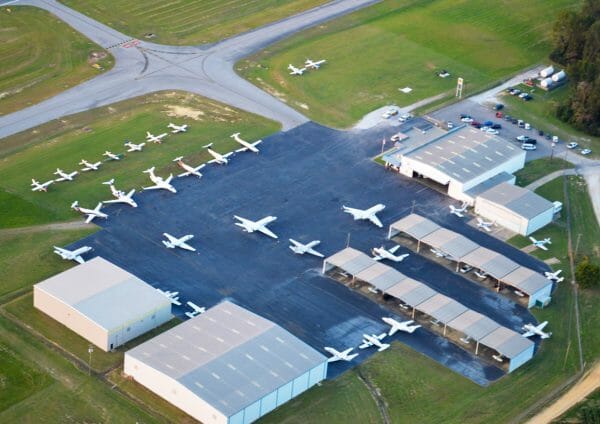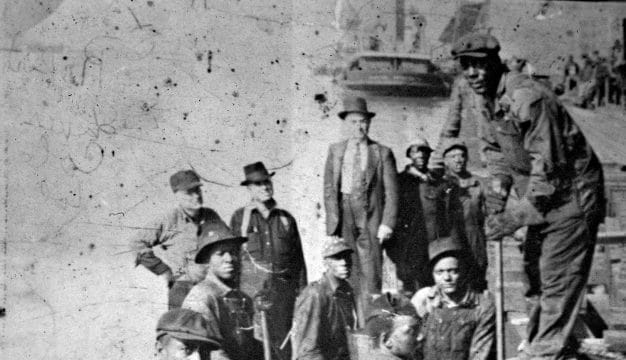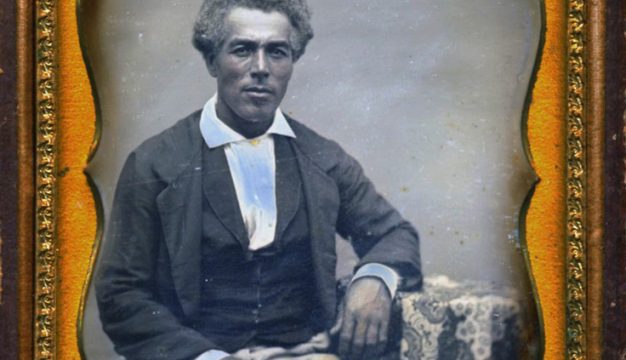Tuscaloosa National Airport
Tuscaloosa National Airport is a public-use airport located just outside Tuscaloosa, Tuscaloosa County. It originated as Van de Graaff Field, an airfield constructed after the outbreak of World War II in Europe for the federal Civilian Pilot Training Program (CPTP); it then served as a United States Army Air Forces (USAAF) flight training field after the United States entered the war. Later, the city of Tuscaloosa converted the airfield to a commercial airport. It presently provides jet charter, general aviation, and private pilot-licensing services for the city, as well as ten regional counties, and the Mercedes-Benz plant in Vance.
In February 1939, Oliver L. Parks (1899-1985), an American pioneer in pilot training and aviation studies from Saint Louis, Missouri, came to Alabama to establish the Alabama Institute of Aeronautics, Inc., for the University of Alabama (UA) as part of the CPTP. It was the federal government's flight-training program established in December 1938 to increase the number of civilian pilots as the United States prepared for the possibility of war. (The famous Tuskegee Airmen took part in this program at Tuskegee Institute in Macon County.) Parks served as the president of the flying school until it closed in September 1944.
The school opened in April 1940 at Hargrove Van De Graaff Field, three miles east of Tuscaloosa along State Highway 80. The airfield, consisting of 256 acres of land, nine buildings, one hanger, and, originally, four turf runways, was named after Coleman Hargrove Van de Graaff (1893-1938), a former University of Alabama (UA) football player and a World War I Army veteran and an older brother of Robert J. Van de Graaff (1901-1967), the Tuscaloosa physicist who invented the high-voltage Van de Graaff generator. Hargrove van de Graaff also advocated for the construction of an airport in Tuscaloosa and succeeded in obtaining federal funding for the airport through the Works Progress Administration.
In 1941, the U.S. Army Air Corps contracted with the Alabama Institute of Aeronautics to provide primary pilot training (phase 1) of its pilot training program for American flight cadets. The school, assigned to the Fifty-first Flying Training Group, Greenville Army Airfield, Mississippi, came under the Southeast Air Corps Training Center (Eastern Flying Training Command after July 1943), headquartered at Maxwell Field, Alabama. The students flew PT-17 Stearmans, Fairchild PT-19s, and a few P-40 Warhawks. The school also conducted flight operations at Albright Auxiliary Field, Foster Auxiliary Field, Knauer Auxiliary Field, Moody Auxiliary Field, and Rice Auxiliary Field, in the general Tuscaloosa area, as well as at Van de Graaff Field.
During the war, the school trained 2,305 American flight cadets. The facility also provided primary flight training to 1,273 Royal Air Force flight cadets from June 1941 to February 1943 and 938 Free French Air Force flight cadets from June 1943 to September 1944. On September 8, 1944, the U.S. Army Air Forces terminated flight training and closed the flight school at Van de Graaff Field, transferred the Free French flight training to the Hawthorne School of Aeronautics, Orangeburg, South Carolina, and turned over the airfield to the War Assets Administration. This agency, in turn, gave the airfield to the city of Tuscaloosa at the end of the war, and the city's Department of Transportation began converting the airfield into a commercial airport.
On June 10, 1949, Southern Airways began commercial airline service at the newly opened Tuscaloosa Regional Airport. By the 1970s, it had introduced jet service at the airport, and the airport had added a passenger terminal and an additional paved runway. Service peaked in the mid-1970s with eight daily arrivals and departures to Atlanta, Memphis, and New Orleans. In 1979, Southern Airways and North Central Airlines merged to form Republic Airlines. Republic Airlines discontinued service on June 1, 1984, however, as most Tuscaloosa-area passengers began to use Birmingham's airport about 60 minutes away.
After Republic Airways left, several other airlines briefly instituted commercial air service at the Tuscaloosa Airport. Sunbelt Airlines provided two daily flights to Memphis from June 1 through September 13, 1984. Air Midwest operated service between April 1986 and June 1996. Atlantic Southeast Airlines provided daily service between Tuscaloosa and Atlanta between 1982 and June 1992. GP Express Airlines provided service to Atlanta from June 1992 to June 1994. But due to dwindling numbers of passengers, no other airline has provided commercial flight since 1997.
During the 2000s, the city of Tuscaloosa and the airport attempted to lure commercial air service back to the airport. City and airport officials believed that the Mercedes-Benz plant which began production in February 1997 and new developments in and around the UA campus would increase the need for commercial air service to and from the Tuscaloosa Airport. Between 2002 and 2006, the airport received $2.2 million in federal, state, and local money to improve its facilities. But these upgrade efforts failed to lure continuing numbers of passengers for sustained service. Currently, jet charters and general aviation are the mainstays of the airport's flight operations. In addition, the General Aviation Center, a private pilot training facility which opened in March 2012 at the Tuscaloosa airport, provides flight training, ground school, written flight training testing, aircraft rentals and sales, aircraft parts and maintenance, and pilot supplies. In 2019, the city government changed the name of the airport Tuscaloosa National Airport in response to a Federal Aviation Administration reclassification.
Presently, the city of Tuscaloosa owns and operates the airport under its Department of Transportation. It covers an area of 724 acres and has two asphalt-paved runways with an Instrument Landing System and approach lights for landings in visibility as low as a half mile. Airport support services are provided by Bama Air, Dixie Air Services, and the General Aviation Center to general aviation operators. The airport hosts numerous passengers and flights annually, the majority of which are charter flights for UA athletes and administrators, especially during football season.
Further Reading
- Guinn, Gilbert. The Arnold Scheme: British Pilots, the American South and the Allies’ Daring Plan. Charleston, S.C.: The History Press, 2007.
- Manning, Thomas A. History of Air Education and Training Command, 1942–2002. Randolph AFB, Tex.: Headquarters Air Education and Training Command Office of History, 2002.
- Shaw, Frederick J. Locating Air Force Base Sites History’s Legacy. Washington, D.C.: Air Force History and Museums Program, United States Air Force, 2004.
